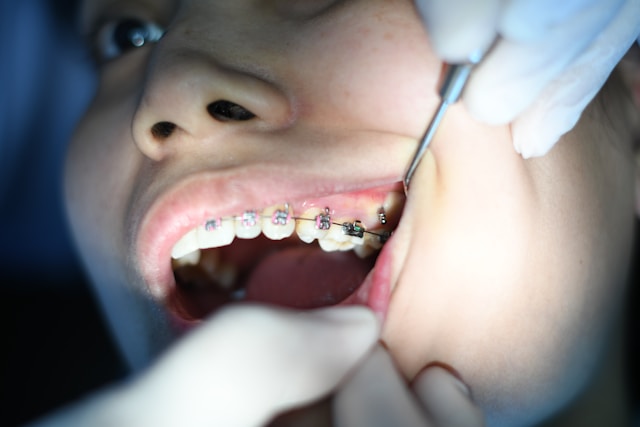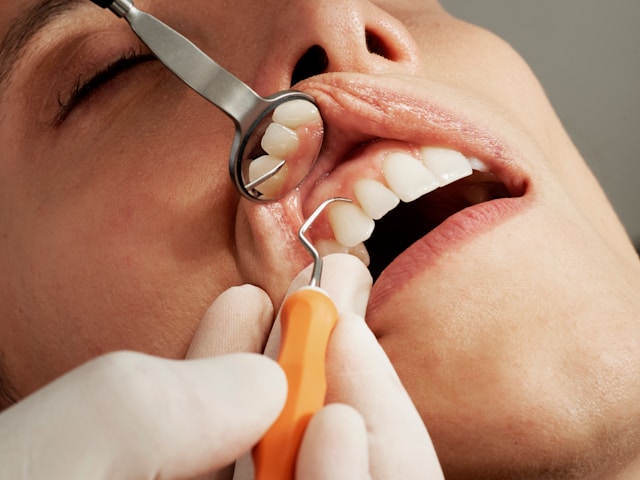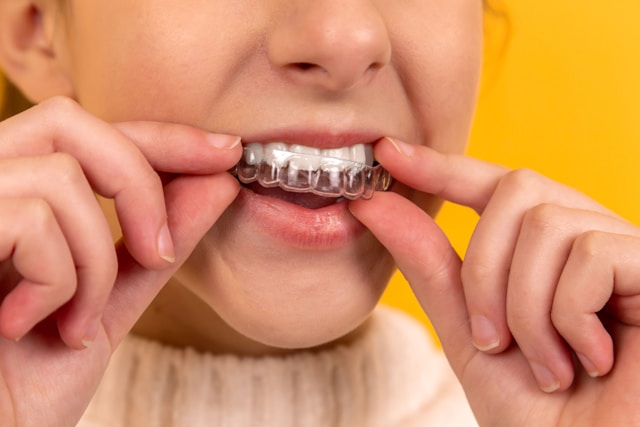Deciding between Invisalign and traditional braces can be a pivotal choice for anyone looking to improve their smile. While both treatments aim to straighten teeth and enhance dental health, they offer distinct experiences. This comparison will explore the benefits and drawbacks of each, helping you make an informed decision based on your lifestyle, budget, and dental needs.
What is Invisalign?
Invisalign is a modern orthodontic treatment that uses clear, removable aligners to straighten teeth discreetly. Unlike traditional braces, these aligners are virtually invisible and can be taken out during meals or when brushing your teeth. This flexibility allows for a more comfortable and less intrusive orthodontic experience.
How Invisalign Works
The process begins with a digital scan of your teeth, which is used to create a customized treatment plan. Each set of aligners is worn for about two weeks before moving on to the next in the series, gradually shifting your teeth into the desired position. Regular check-ups with your orthodontist ensure the treatment progresses as planned.
Benefits of Invisalign
One of the major advantages of Invisalign is its aesthetic appeal, as the aligners are hardly noticeable when worn. It also offers the convenience of eating whatever you like without worrying about damaging brackets or wires. Moreover, the removable nature of Invisalign makes oral hygiene much easier compared to traditional braces.

What are Braces?
Braces are orthodontic devices used to correct misalignments of the teeth and jaw, promoting optimal oral health and aesthetics. They consist of metal brackets attached to each tooth, connected by wires that gradually guide teeth into their proper positions. Braces are highly effective for treating a wide range of dental issues, from simple crowding to complex bite problems, making them a versatile choice for patients of all ages.
Ceramic Braces
Ceramic braces offer a less noticeable alternative to metal braces because they use tooth-colored or clear brackets that blend more seamlessly with the teeth. While they function similarly to metal braces, the ceramic materials are typically more fragile and may require additional care during treatment. They are a popular choice for adults and older teenagers who are concerned about the aesthetic appearance of braces.
Lingual Braces
Lingual braces are attached to the back of the teeth, hiding them from view and making them invisible when you smile. They are customized to match the shape of your teeth, which can make them more comfortable once adjusted. However, lingual braces can be more challenging to clean and may initially cause some discomfort to the tongue.
Self-Ligating Braces
Self-ligating braces use a different type of technology that does not require the use of elastics, making them less noticeable and often reducing the amount of time spent in the dentist’s chair. These braces come with traditional metal, ceramic, or clear brackets. They are designed to reduce friction between the bracket and the wire, which may result in a quicker, more comfortable treatment.
Each of these options has its own set of benefits and considerations, making it important for individuals to consult with their orthodontist to determine the best type of braces for their specific needs.
If you’re considering braces and looking for expert advice in the Washington, D.C. area, consider visiting Kumra Orthodontics, a leading orthodontist in DC. They offer personalized care and a range of options to suit your orthodontic needs, ensuring you get the best possible results from your treatment.
Comparing the Effectiveness of Invisalign and Braces
When deciding between Invisalign and braces, understanding their effectiveness in various orthodontic situations is crucial. Both methods aim to correct dental issues, but their suitability can vary depending on the complexity of the case.
Effectiveness in Teeth Straightening
Invisalign and traditional braces are both highly effective for straightening teeth, though their methods and ideal use cases differ. Braces are typically more effective for complex dental issues and can handle more severe misalignments and bite problems. In contrast, Invisalign is best suited for mild to moderate dental misalignments and is popular for its discreet appearance.

Aesthetic and Comfort Considerations
When it comes to aesthetics, Invisalign offers a clear advantage with its nearly invisible aligners that are appealing to adults and teens alike. Traditional braces are more noticeable, but modern options include ceramic braces that can blend with the natural color of your teeth. Regarding comfort, patients often report that Invisalign is less painful than braces since the aligners are smooth and don’t irritate the cheeks or gums.
Duration of Treatment
The treatment duration can vary significantly between Invisalign and braces. Invisalign usually requires 12 to 18 months, depending on the patient’s compliance with wearing the aligners for the recommended 22 hours a day. On the other hand, braces typically need to be worn for about 2 years, although this can vary based on the complexity of the alignment issues.
Cost Comparison
Cost is usually a significant factor when deciding which dental option is best for you. Historically, Invisalign has sometimes been more expensive than traditional braces; with that being said, Invisalign treatment might cost less than you think nowadays, with geographical location and treatment requirements also bringing the costs more into parity. Many dental insurance plans now also provide coverage for both options, potentially reducing out-of-pocket expenses.
Suitability for Different Age Groups
Braces are a common choice for children and young teenagers as they are durable and can correct a wide range of orthodontic issues. Invisalign, however, is often preferred by older teenagers and adults due to its invisibility and removability, making it easier to maintain oral hygiene and less disruptive to lifestyle. It’s important to consult with an orthodontist to determine the most appropriate option based on age and orthodontic needs.
Conclusion
Both Invisalign and traditional braces have their own advantages and considerations. When deciding between the two, it’s important to consider factors such as effectiveness, comfort, impact on oral health, cost, and treatment duration. Ultimately, consulting with an orthodontist and discussing your specific needs and preferences is the best way to determine which option is better for achieving a beautiful smile. If you’re considering Invisalign treatment, be sure to book an Invisalign consultation to discuss your options with a qualified orthodontist.














Leave a Reply